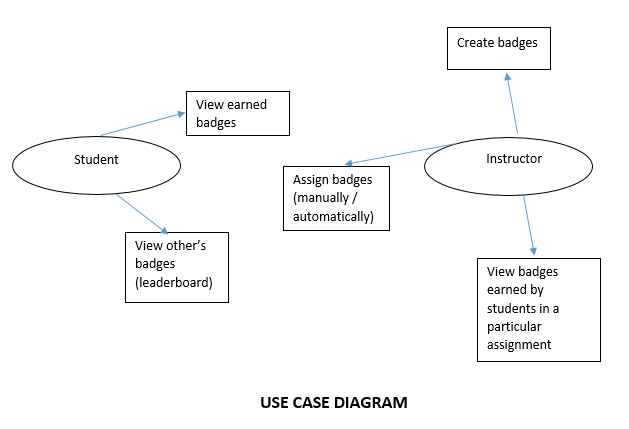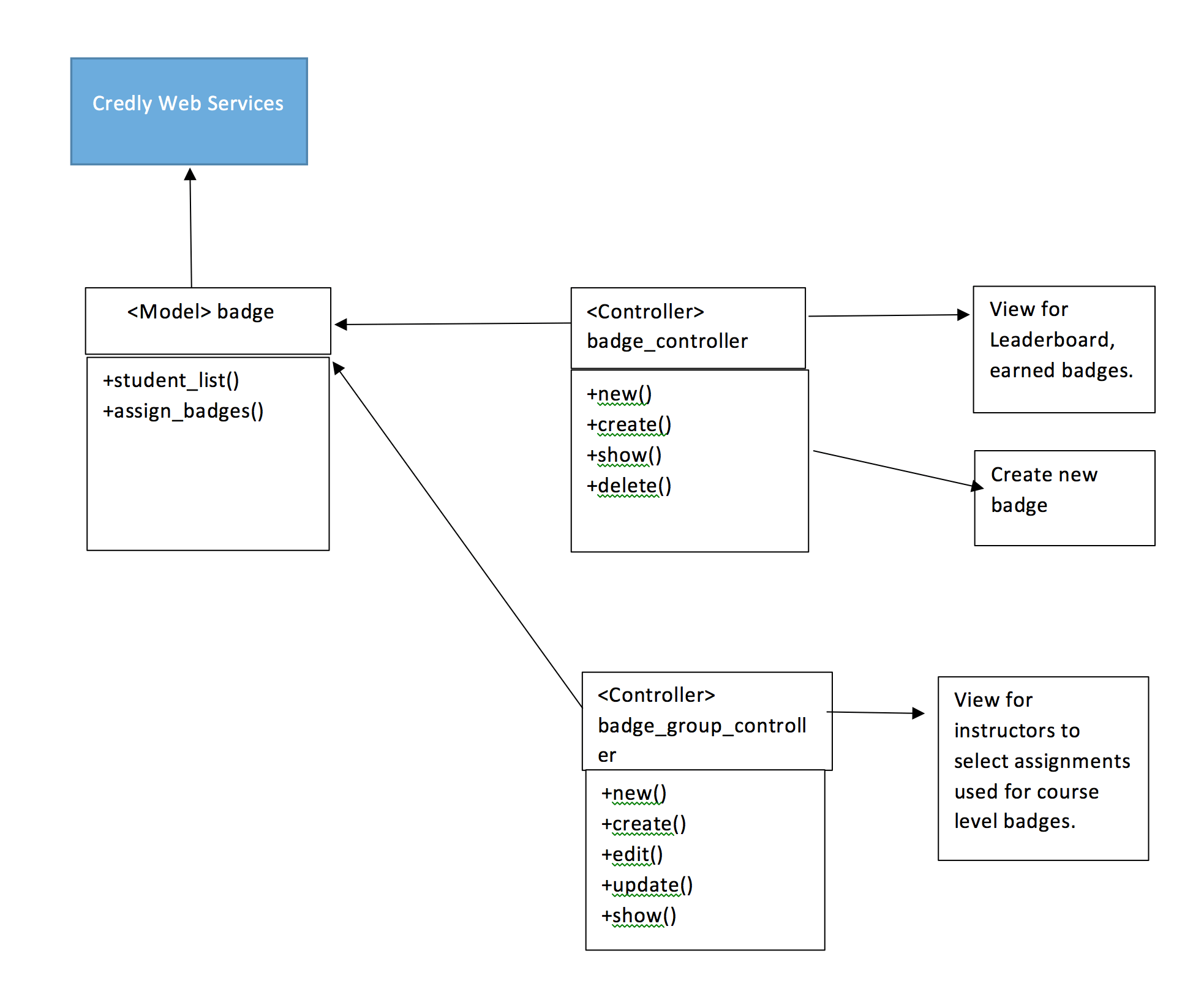CSC/ECE 517 Spring 2016/Badging System: Difference between revisions
| Line 107: | Line 107: | ||
relevant to the implementation of this solution. | relevant to the implementation of this solution. | ||
[[File: | [[File:Cap1.PNG]] | ||
==Mockups== | ==Mockups== | ||
Mockup goes here | Mockup goes here | ||
Revision as of 21:09, 11 April 2016
Introduction
Background
Much like physical badges in the army and youth scout troops, digital badges are an assessment and credentialing mechanism that is housed and managed online. Badges are designed to make visible and validate learning in both formal and informal settings, and hold the potential to help transform where and how learning is valued. In other words, badges may be used in order to set goals and motivations for students and reward and may help to improve their academic scores. Badges can also be considered as a way to reward student’s success. Moreover, badges can be used by teachers for alternative assessment techniques.
Purpose
One request for the Expertiza system is to add a badging system as a way to measure student performance. Expertiza will take advantage of the motivations created from badges by awarding students with new badges based off providing a variety of factors within the Expertiza system. Some of these badges include: achieving a top percentage of scores in an assignment, achieving a high peer review score, performing well overall in a course and other manual accomplishments deemed necessary by the teaching staff for a course. Instead of implementing the whole badging system, we will call an existing online badging web service, Credly, and integrate it with Expertiza.
Requirements
Use Case
The following simple illustration shows the use cases of the system.
Tasks To Do
- Create db table to store the participants with badges.
- Write code for calling the service and calculating/identifying badges based on the scores of students on all assignments.
- Add badge specification to course details and assignment details page for the instructor to specify the badges.
- Create views for both students and instructors. Students should be able to view their badges from different courses and instructors should be able to see the badges awarded/earned for their class.
- Display a subset of the badge holders on the leaderboard page. Also, student can view badges of other students in the course.
- Criteria to be followed for awarding badges:
- Top scores for an assignment. (configured at assignment page)
- All scores more than a threshold for an assignment. (configured at assignment page)
- Mean score of selected assignments being greater than threshold. (configured at course page)
- Top mean score of selected assignments. (configured at course page)
- Discretionary merit badges for projects that exceed expectations.
Deciding External Web Service
| Factors | Open Badges | Credly | Bestr |
|---|---|---|---|
| Native User Management | No | Yes. No need to store all records locally. | No |
| Extensive API Support | Yes. But many still in beta phase. | Yes. (Primary reason for choosing Credly) | No |
| Interactive Badge Builder SDK | Yes. But still in beta phase. | Yes | Yes. But gives few options for cusromization. |
| Existing Integration with other systems | Few | Many | No |
| Monetary Costs | Free | Free tier as well as paid plans. | Paid. |
From the above rubrics, we decided to use Credly as our web service for badging system.
Database Design
The following tables will be created to implement a solution for this project.
1. badges table - which stores badge_id and their descriptions.
| Column | Type | Comment |
|---|---|---|
| badge_id | int | Primary key. Auto-generated |
| name | string | Description of the badge |
2. badge_users table - which stores details about what badges are assignment to a user and related details.
| Column | Type | Comment |
|---|---|---|
| badge_user_id | int | Primary key. Auto-generated |
| badge_id | int | Referenced from badges table |
| user_id | int | Referenced from users table |
| course_id | int | Referenced from courses table |
| assignment_id | int | Referenced from assignments table |
| is_course_badge | boolean | Whether badge is a course-badge or individual-badge |
3. badge_groups - which stores information about which badges should be assigned depending on the threshold score.
| Column | Type | Comment |
|---|---|---|
| badge_group_id | int | Primary key. Auto-generated |
| strategy | string | Describes the strategy of awarding |
| threshold | int | Score required to award the badge |
4. assignment_groups - which stores details about the team badges.
| Column | Type | Comment |
|---|---|---|
| assignment_group_id | int | Primary key. Auto-generated |
| badge_group_id | int | Referenced from badge_groups table |
| assignment_id | int | Referenced from assignments table |
Design Pattern
- MVC – The project is implemented in Ruby on Rails that uses MVC architecture. It separates an application’s data model, user interface, and control logic into three distinct components (model, view and controller, respectively).
- DRY Principle – We are trying to reuse the existing functionalities in Expertiza, thus avoiding code duplication. Whenever possible, code modification based on the existing classes, controllers, or tables will be done instead of creating the new one.
Object Oriented Design
As with most Ruby on Rails applications, this solution uses the Model-View-Controller design pattern. The following diagram shows a workflow of the planned design along with the attributes and operations that are relevant to the implementation of this solution.
Mockups
Mockup goes here

